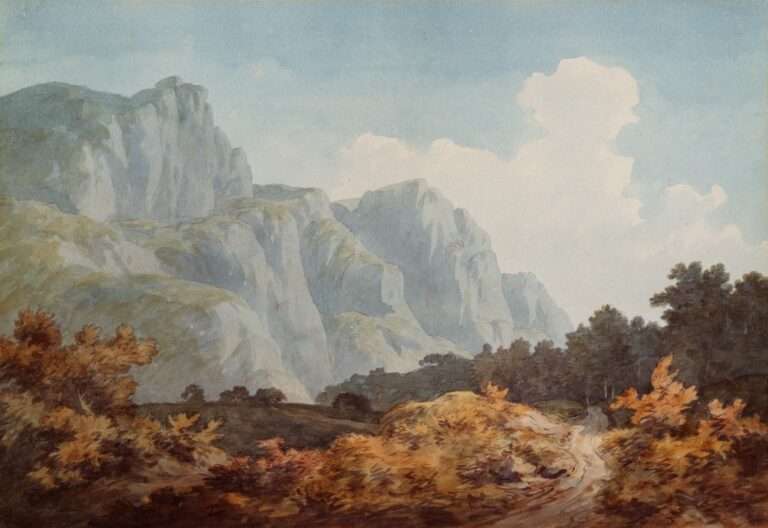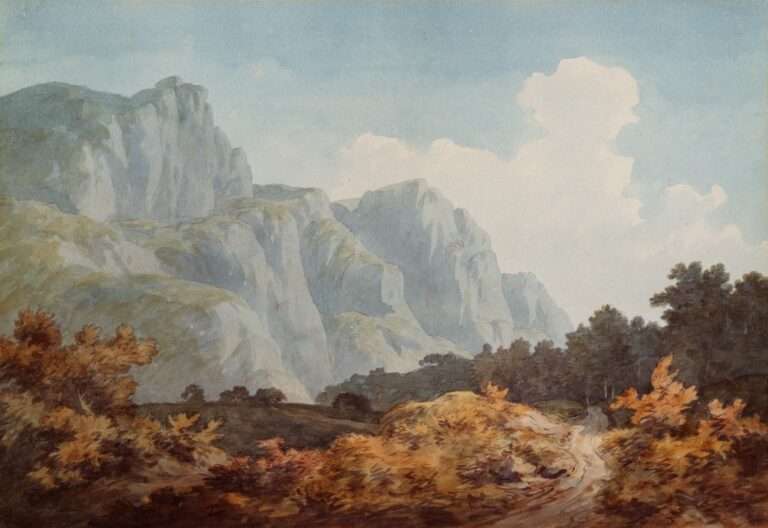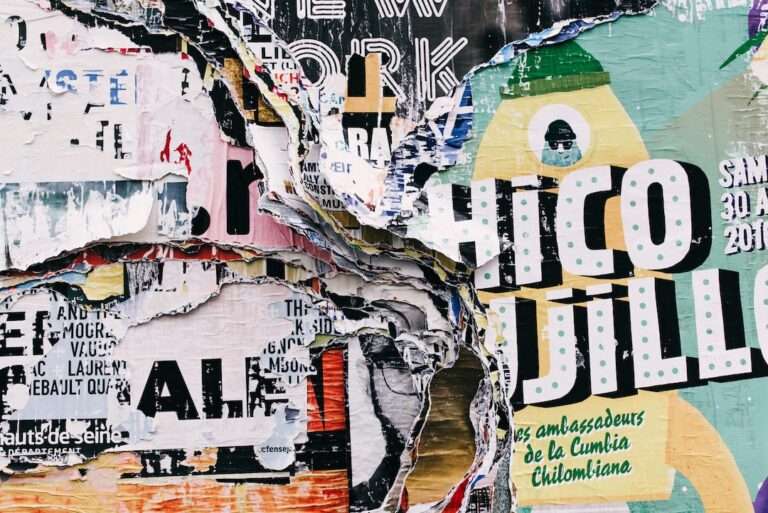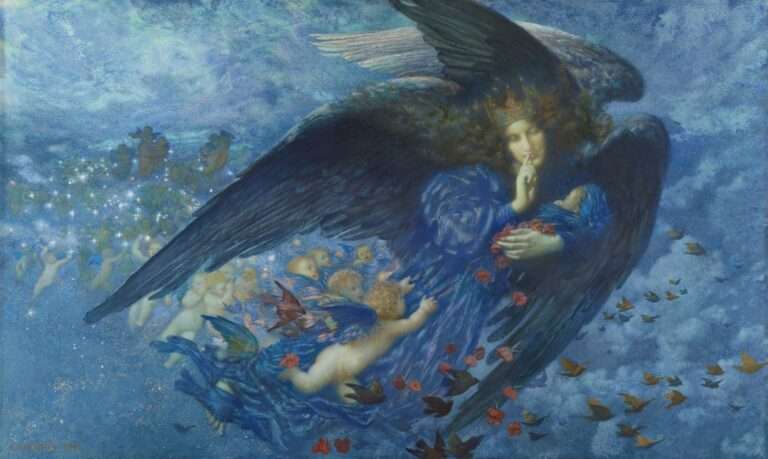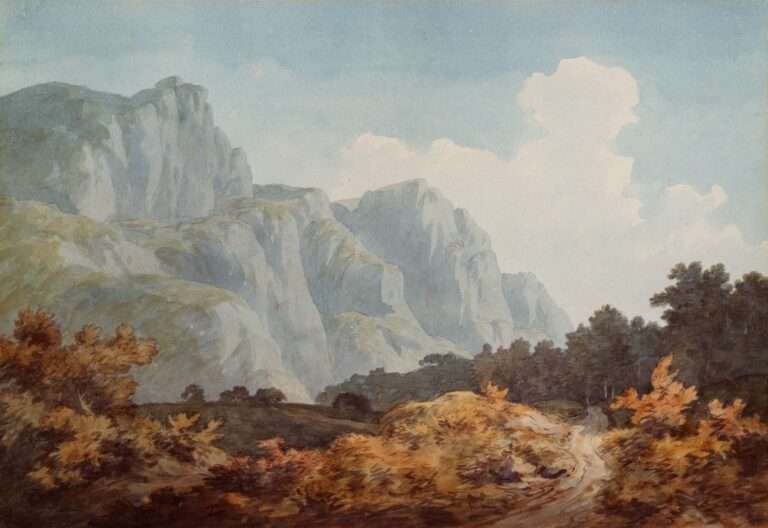The Mystical World of Art Nouveau Symbolism
Art Nouveau, which emerged in the late 19th century, was a revolutionary artistic movement that sought to break away from the traditional styles of the time. It was characterized by its emphasis on organic forms, intricate designs, and a sense of harmony and unity. Symbolism played a crucial role in Art Nouveau, as artists sought to convey deeper meanings and messages through their work. This article will explore the importance of symbolism in Art Nouveau and its impact on the movement.
The Language of Nature
One of the defining features of Art Nouveau is its depiction of flora and fauna. Artists drew inspiration from the natural world, incorporating elements such as flowers, plants, and animals into their designs. These natural motifs were not merely decorative, but held symbolic meanings as well.
Flowers, for example, were often used to represent various emotions and ideas. The lily symbolized purity and innocence, while the rose represented love and passion. Leaves and vines were associated with growth and renewal, reflecting the movement’s focus on nature’s cycles.
Animals also played a significant role in Art Nouveau symbolism. Birds were often used to symbolize freedom and spirituality, while insects like butterflies represented transformation and metamorphosis. By incorporating these natural motifs into their work, artists were able to convey deeper meanings and evoke emotions in the viewer.
The Femme Fatale
Another important aspect of Art Nouveau symbolism is the depiction of the female form, often portrayed as seductive and alluring. This representation of women as femme fatales was a reflection of the changing roles of women in society at the time.
The female figure in Art Nouveau was seen as a symbol of power and sensuality. She was often depicted with flowing hair, curvaceous forms, and provocative poses. This portrayal challenged traditional notions of femininity and celebrated women’s sexuality.
The femme fatale also represented the idea of temptation and danger. She was often associated with mythical creatures such as sirens or mermaids, who lured men to their demise. This symbolism reflected the anxieties and desires of the time, as society grappled with changing gender roles and sexual liberation.
The Power of Mythology
Art Nouveau drew heavily from mythology and ancient cultures, incorporating mythical creatures and symbols into its designs. These references to ancient myths and legends added a sense of mystery and enchantment to the movement.
One of the most commonly used mythological figures in Art Nouveau is the nymph. Nymphs were nature spirits in Greek mythology, associated with specific natural elements such as water or trees. They were often depicted as beautiful young women, embodying the harmony between humans and nature.
Other mythological creatures such as dragons, phoenixes, and unicorns were also frequently used in Art Nouveau symbolism. These creatures represented power, transformation, and the supernatural. By incorporating these mythical references into their work, artists were able to tap into a collective unconsciousness and evoke a sense of wonder and awe.
The Allure of the Orient
Art Nouveau was greatly influenced by Eastern art and design, particularly from Japan and China. The exoticism and mysticism of the East appealed to artists, who incorporated Eastern motifs into their work.
Eastern motifs such as cherry blossoms, fans, and dragons were often used in Art Nouveau designs. These symbols held deep cultural significance in Eastern cultures, representing concepts such as beauty, luck, and power.
The use of Eastern motifs in Art Nouveau also reflected a fascination with the exotic and unknown. As Western societies became more interconnected with the rest of the world through trade and travel, there was a growing interest in exploring other cultures. By incorporating Eastern symbolism into their work, artists were able to create a sense of escapism and transport viewers to far-off lands.
The Spiritual Dimension

Art Nouveau was not just concerned with the physical world, but also explored the spiritual and mystical realms. Religious and mystical motifs were often incorporated into Art Nouveau designs, adding a deeper layer of meaning to the movement.
Symbols such as crosses, stars, and crescent moons were used to represent spirituality and transcendence. These symbols were often combined with natural motifs, reflecting the belief in a divine connection between humans and nature.
The use of religious and mystical symbolism in Art Nouveau also reflected a desire for spiritual enlightenment and a rejection of traditional religious institutions. The movement embraced a more holistic and inclusive approach to spirituality, drawing inspiration from various religious and mystical traditions.
The Magic of Color
Color played a crucial role in Art Nouveau symbolism, with artists using different hues to convey specific meanings and emotions. Each color had its own symbolic significance, adding depth and richness to the artwork.
For example, blue was often used to represent spirituality and tranquility, while red symbolized passion and energy. Green was associated with nature and growth, while gold represented wealth and luxury. By carefully selecting and combining colors, artists were able to create a visual language that enhanced the symbolic meaning of their work.
The use of color in Art Nouveau also reflected the movement’s emphasis on harmony and unity. Artists sought to create a sense of balance and coherence in their designs, using color as a tool to achieve this goal.
The Art of Transformation
Metamorphosis was a recurring theme in Art Nouveau symbolism, representing the transformative power of nature and the human spirit. Artists often depicted figures or objects in a state of transition or change, reflecting the movement’s belief in constant growth and evolution.
One of the most famous examples of metamorphosis in Art Nouveau is Alphonse Mucha’s series “The Seasons.” In these works, Mucha depicts women merging with natural elements such as flowers and trees, symbolizing the cyclical nature of life and the interconnectedness of humans and nature.
Metamorphosis also represented the idea of personal transformation and self-discovery. The movement encouraged individuals to embrace change and explore their own potential for growth and creativity.
The Symbolism of Architecture
Art Nouveau symbolism was not limited to two-dimensional artwork, but also extended to architecture and interior design. Buildings and interiors were designed with symbolic elements that conveyed deeper meanings and messages.
Architectural features such as curved lines, flowing forms, and intricate details were used to create a sense of harmony and unity. These elements reflected the movement’s emphasis on organic forms and its rejection of the rigid geometries of the past.
Symbols such as flowers, animals, and mythical creatures were also incorporated into Art Nouveau architecture. These symbols added a sense of enchantment and wonder to the built environment, transforming everyday spaces into works of art.
The Legacy of Art Nouveau Symbolism
The symbolism of Art Nouveau continues to have a lasting impact on modern art and design. Its emphasis on organic forms, intricate details, and symbolic meanings can be seen in various artistic movements that followed.
Art Nouveau symbolism laid the foundation for later movements such as Art Deco, which embraced similar principles of elegance, luxury, and symbolism. The influence of Art Nouveau can also be seen in contemporary design, with its emphasis on natural motifs, fluid lines, and a sense of harmony.
In conclusion, symbolism played a crucial role in Art Nouveau, adding depth and meaning to the movement’s designs. From its depiction of nature and mythical creatures to its exploration of spirituality and transformation, Art Nouveau symbolism continues to captivate audiences today. Its enduring legacy can be seen in modern art and design, reminding us of the power of symbolism in conveying deeper truths and emotions.
If you’re interested in exploring the symbolism behind Art Nouveau, you might find the article on the symbolism of the snake fascinating. Snakes have long been associated with various meanings and interpretations, and understanding their symbolism can provide valuable insights into the intricate world of Art Nouveau. To delve deeper into this topic, check out this article on the symbolism of a snake.
FAQs
What is Art Nouveau Symbolism?
Art Nouveau Symbolism is an art movement that emerged in the late 19th century and lasted until the early 20th century. It is characterized by its use of organic forms, flowing lines, and decorative motifs inspired by nature.
What are the key features of Art Nouveau Symbolism?
The key features of Art Nouveau Symbolism include the use of organic forms, flowing lines, and decorative motifs inspired by nature. It also emphasizes the use of new materials and techniques, such as iron, glass, and ceramics.
What inspired Art Nouveau Symbolism?
Art Nouveau Symbolism was inspired by a variety of sources, including the natural world, Japanese art, and the Arts and Crafts movement. It was also influenced by the growing interest in new materials and techniques, as well as the desire to create a new style that was distinct from the traditional styles of the past.
What are some famous examples of Art Nouveau Symbolism?
Some famous examples of Art Nouveau Symbolism include the works of artists such as Alphonse Mucha, Gustav Klimt, and Aubrey Beardsley. It can also be seen in the architecture of buildings such as the Hôtel Tassel in Brussels and the Casa Batlló in Barcelona.
What is the significance of Art Nouveau Symbolism?
Art Nouveau Symbolism was significant because it represented a break from the traditional styles of the past and a move towards a more modern and innovative approach to art and design. It also had a significant impact on the development of modern art and design, influencing movements such as Art Deco and the Bauhaus.
